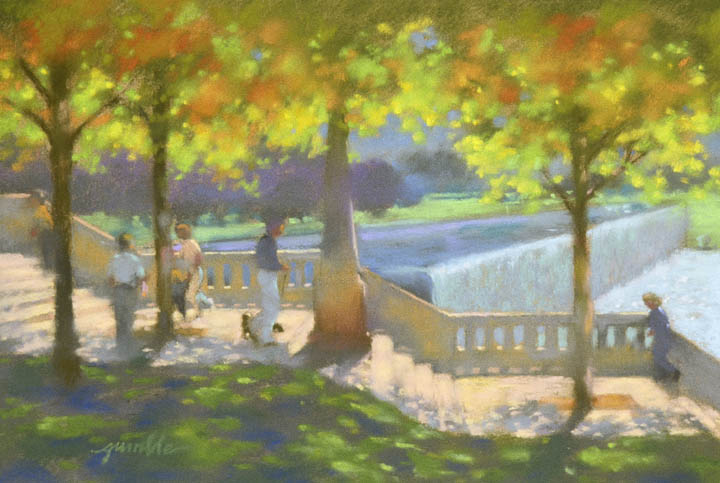Where things begin to fall apart

Today I want to share a few tips and tools I’ve learned to rely on.
Tools that make your art not only better but, when you learn to use them, they gradually make art easier and faster.
Tools forged in the fires of experience.
There was a brief period in my career when I put myself through hell, because I abandoned these tools.
Despite the fact they had been a vital part of my eighteen years as an illustrator.
During my years as an illustrator, deadlines for finished art were always short, and clients wanted their art done right the first time.
So I totally relied on these tools to keep my clients happy.
When I left illustration to dive into fine art, I made the same fatal mistake I see beginning artists make today.
I unconsciously assumed I didn’t need these tools anymore. Hey, I thought, fine art had to be much easier than illustration.
No demanding clients to please.
No need to make a bunch crucial decisions before starting the art.
I could just paint whatever was in my reference photograph.
So that’s what I did.
And condemned half the art I began to an early death, smashed into a garbage can.
Do that enough times and your self-confidence feels like flattened roadkill.
After a couple months of this madness I finally was forced to admit the cause of all my trouble...
...was me and the bad decisions I was making.
I returned to using the six tools that had been my savior as an illustrator.
And they’ve been the basis of making my art ever since.
• Design
• Color values
• Idea
• Drawing
• Edges
• Simplify

Nothing complex here. Nothing that needs a Master’s degree to implement. Just the six fundamental elements of good art.
And I can tell you from experience the success you want is on the other side of understanding and using them...
...to make the right decisions every time you create art.
The things you want — accomplishments, experiences, achievements — are no longer out of reach.
You begin to realize you are in control. You’re creating the kind of art you’ve long wanted to be true.
Before you know it, step by step, one foot in front of the other, people are attracted to your art, pulled toward you, and that attention turns into value for them and value for you.
As great as that attention is, it's nothing compared to what you feel...
...on your internal scoreboard.
The one that measures pride.
Not the arrogant “I’m better than you” kind of pride, but the deep satisfaction that comes from knowing you can create something great.
You know it and the people you care about know it.
It's the look at yourself square in the eyes in the mirror kind of pride you feel when you've been inside the arena.
You’ve wrestled the beast inside that tells you “you’re not good enough” and beaten it.
I wouldn't trade that feeling for the world and, once you experience it, you won't either.
Now that you know how important these tools are, and what happens when you understand and use them well, the question you're probably asking yourself is:
“How can I become a better artist?”
As much as I hate to say it, answering that question is where things begin to fall apart… I'll explain why in my next post…
Best Wishes,
Gary Gumble
Founder of BeginningArtist.com
Without art the crudeness of reality would make the world unbearable. (George Bernard Shaw)
P.S. This question of how to become a better artist is central to my reasons for starting Beginningartist.com.
It’s such an important question that I’m going to continue to address it next week.
It’s also central to something I’ve thought about doing for a long time. Something I’ve wanted to create but didn’t have the courage to complete.
That something will be the big surprise at the end of this blog post journey and will correct the reasons why things do fall apart for many beginning artists.
More about that soon...
Copyright Gary Gumble 2023 All rights reserved About Privacy Policy Terms of Use Contact www.beginningartist.com 27 rue Roucher, 34000 Montpellier, France